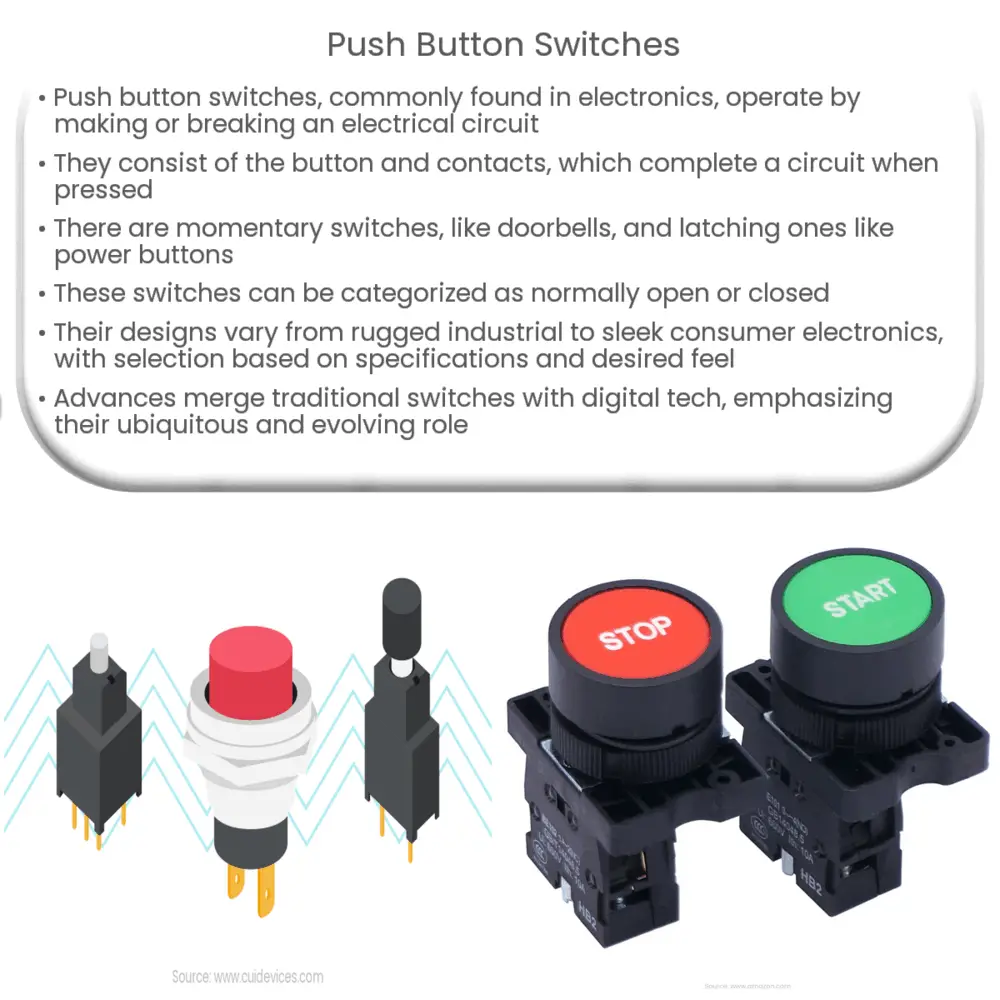Explore the workings, types, applications, design considerations, and future trends of push button switches in our comprehensive guide.

Introduction to Push Button Switches
A push button switch, often simply referred to as a ‘push button,’ is a common type of switch mechanism commonly found in various electronics and appliances. It operates on a simple principle: it makes or breaks an electrical circuit when the button is pushed or released, thereby controlling some kind of process or function in the device.
How Push Button Switches Work
At its most basic, a push button switch consists of two key parts: the button itself and the contacts. When the button is pushed, it moves a mechanism that brings two electrical contacts together. These contacts then complete an electrical circuit, allowing current to flow and the device to operate. When the button is released, the contacts separate, breaking the circuit and halting the device’s operation.
Types of Push Button Switches
These switches can also be categorized as normally open or normally closed, based on their default state. Normally open switches don’t allow current to pass until the button is pressed, while normally closed switches allow current to pass until the button is pressed.
Common Applications of Push Button Switches
Push button switches are ubiquitous in the modern world, with a broad range of applications across various industries. Some of these include:
Design and Construction of Push Button Switches
The design and construction of push button switches can vary considerably depending on their application. For instance, industrial push button switches are often designed to withstand harsh environments and rough handling, made with rugged materials such as stainless steel or durable plastic, and equipped with features like water and dust resistance.
Conversely, those designed for consumer electronics often prioritize compactness and aesthetic appeal. They are typically made of lightweight materials like plastic or aluminum, and they may be designed to provide a satisfying tactile response when pressed, improving the user experience.
Considerations for Choosing Push Button Switches
When selecting a push button switch for a specific application, several factors should be considered. These include the switch’s electrical specifications (such as voltage and current rating), physical dimensions, environmental resistance (like water, dust, and temperature resistance), and the force required to activate the switch. Additionally, the desired feel of the button and its aesthetic design may be significant, particularly for consumer-facing applications.
The Future of Push Button Switches
While the basic concept of the push button switch remains unchanged, technological advancements continue to influence their design and usage. For instance, switches can now incorporate illumination for better visibility or aesthetic appeal. In high-tech applications, push buttons are being integrated into touchscreens and gesture-based interfaces, blurring the lines between traditional switches and digital technology.
Conclusion
In conclusion, push button switches are a vital component in numerous devices and systems that we interact with daily. Their simple yet versatile functionality, coupled with the broad array of types and designs, allows them to fulfill a multitude of roles across various industries. As technology continues to advance, the humble push button switch adapts, highlighting its enduring relevance in our increasingly interconnected world.

